How to Block Customers on Shopify: A Complete Guide to Protect Your Store
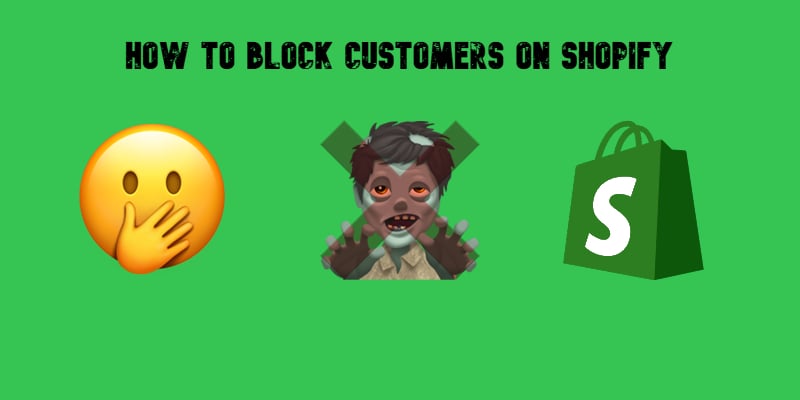
Running an online store comes with its share of challenges, including managing difficult customers. Whether it’s fraudulent buyers, abusive behavior, or spammers, at some point you might ask yourself: How to block customers on Shopify? While the platform doesn’t offer a built-in feature for blocking customers, there are effective ways to protect your business and reduce risks.
Deleting a customer account is a straightforward option, but it won’t stop them from creating a new one (Also, check how to delete a Shopify account). That’s why combining strategies like custom redirects, fraud detection apps, and proactive monitoring is key. Knowing when and how to block a customer can help prevent chargebacks, safeguard your reputation, and minimize financial losses.
In this guide, we’ll explore everything from spotting problematic customers to using third-party tools to block high-risk users. By the end, you’ll have a clear strategy for securing your Shopify store without sacrificing customer experience. Ready to take control? Let’s dive in.

Table of contents
- Can You Block a Customer on Shopify? Here’s What You Need to Know
- When Should You Block a Customer on Shopify? Common Scenarios
- How to Block Customers on Shopify: Step-by-Step Solutions
- Top Apps to Block Customers on Shopify
- Avoiding False Positives: How to Identify Problem Customers Accurately
- Legal Considerations for Blocking Customers: Privacy and Compliance
- What Happens if You Don’t Block Problem Customers? Risks and Consequences
- Final Words: Balancing Protection and Customer Experience
- FAQ
Can You Block a Customer on Shopify? Here’s What You Need to Know
If you’ve had problems with certain customers — fraudulent buyers, abusive behavior, or spammers — you’ve likely wondered: Can I block a customer on Shopify? Unfortunately, Shopify does not have a built-in feature to block customers from accessing your store or placing future orders. However, there are workarounds to help you manage unwanted activity.
The most straightforward option is to delete a customer account from your Shopify admin. This removes the customer’s personal information, which may be necessary for compliance with privacy regulations like GDPR, but it won’t stop them from creating a new account or placing another order.
If deleting the account isn’t enough, you can explore other strategies, such as using third-party apps for fraud prevention, which we’ll discuss later in this guide. These solutions offer more control by blocking specific IP addresses or identifying suspicious customer behavior before an order is placed.
Blocking customers is essential in certain scenarios, but it’s important to weigh your options and implement a strategy that fits your business needs. In the next section, we’ll explore when blocking a customer might be necessary and how to recognize the signs of a problematic customer.
When Should You Block a Customer on Shopify? Common Scenarios
Sometimes, blocking a customer is not just a good idea — it’s essential for protecting your business. While most customers are honest and well-meaning, a few may disrupt operations, cause financial losses, or even harm your brand reputation. But how do you know when blocking someone is necessary?
Here are some common scenarios where blocking customers on Shopify becomes the best course of action:
Repeated Fraudulent Orders
If Shopify’s fraud analysis frequently flags orders from the same customer, it’s a warning sign. Customers using stolen credit cards, mismatched billing and shipping addresses, or multiple failed payment attempts pose a risk to your business. Blocking these high-risk buyers can save you from chargebacks and financial headaches.
Abusive or Aggressive Behavior
No one wants to deal with abusive language or harassment. If a customer crosses the line by sending aggressive messages to your support team or spreading false claims about your business, it’s time to consider blocking them to protect your staff and your brand reputation.
Frequent Returns and Chargebacks
Customers who repeatedly buy and return products — or worse, file chargebacks without a valid reason — can drain your resources and hurt your profit margins. When patterns of excessive returns or unjustified chargebacks emerge, blocking such customers may be the only way to prevent further loss.
Spam Accounts and Fake Orders
Some customers create multiple accounts to spam your store with fake orders or abuse promotions. This behavior clutters your data, disrupts operations, and sometimes results in financial loss.
Suspicious Use of Promotions
Certain customers take advantage of discount codes or referral programs in ways that are clearly manipulative — such as creating fake referrals or exploiting loopholes. This can undermine your marketing efforts and lead to revenue loss.
Warning Signs of Problematic Customers
Wondering how to spot these troublesome customers early? Keep an eye out for these warning signs:
- High-risk order alerts from Shopify’s fraud detection tool.
- Mismatched billing and shipping addresses or orders placed from unusual locations.
- Multiple failed payment attempts in a short period.
- Aggressive or threatening communication through customer service channels.
- Suspicious email addresses that appear autogenerated.
Blocking customers on Shopify might seem drastic, but in situations like these, it’s often the best way to safeguard your store. Not every problematic customer will require blocking — sometimes a warning email or tighter fraud monitoring will suffice. But knowing when to draw the line is crucial.
Now, let’s explore how to block customers on Shopify step by step, including practical solutions and useful workarounds.
How to Block Customers on Shopify: Step-by-Step Solutions
Since Shopify doesn’t offer a native feature to block customers from placing orders, you’ll need to get creative with alternative solutions. Here, we’ll explore practical ways to manage problematic customers, from deleting customer accounts to creating custom redirects.
Method 1: Delete Customer Account
If your Shopify store requires customers to create an account, deleting their account from the Shopify admin is a simple way to prevent them from logging back in. However, keep in mind that deleting an account does not prevent the customer from visiting your store or creating a new account in the future.
Here’s how to delete a customer account:
- Log in to your Shopify admin.
- Click Customers from the left-hand menu.
- Use the search box to find the customer by name, location, or email address. Note that you can select multiple customers to delete them in bulk.
- Click the More actions drop-down and select Delete customer.

- Confirm the deletion. This action is permanent and cannot be undone.
Once you hit that red button, the customer’s account will be removed from your store.
When Deleting a Customer Isn’t an Option
You cannot delete a customer account in these situations:
- The customer has an order history.
- There’s a GDPR erasure request pending.
- The customer has an active subscription or has had one in the past.
- The customer is scheduled to receive a gift card that hasn’t been sent yet.
In these cases, deleting the account isn’t possible, and you’ll need to look for other solutions. Also, deleting an account does not block a person from creating a new one — so this isn’t a foolproof method for blocking persistent offenders.
Method 2: Create Customer Redirects
One clever workaround for blocking customers is to add a custom redirect for specific users. Shopify Partner Viktor Shtodler developed a solution using Liquid code that redirects tagged customers to an external page.
Here’s an example of the code:
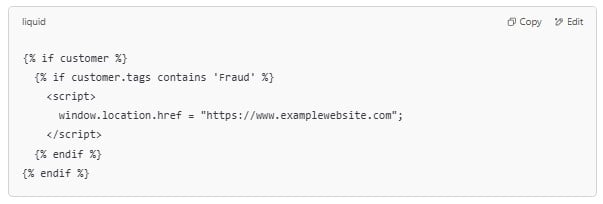
This method of deleting Shopify customers works as follows:
- Add a “Fraud” tag to the customer in your Shopify admin.
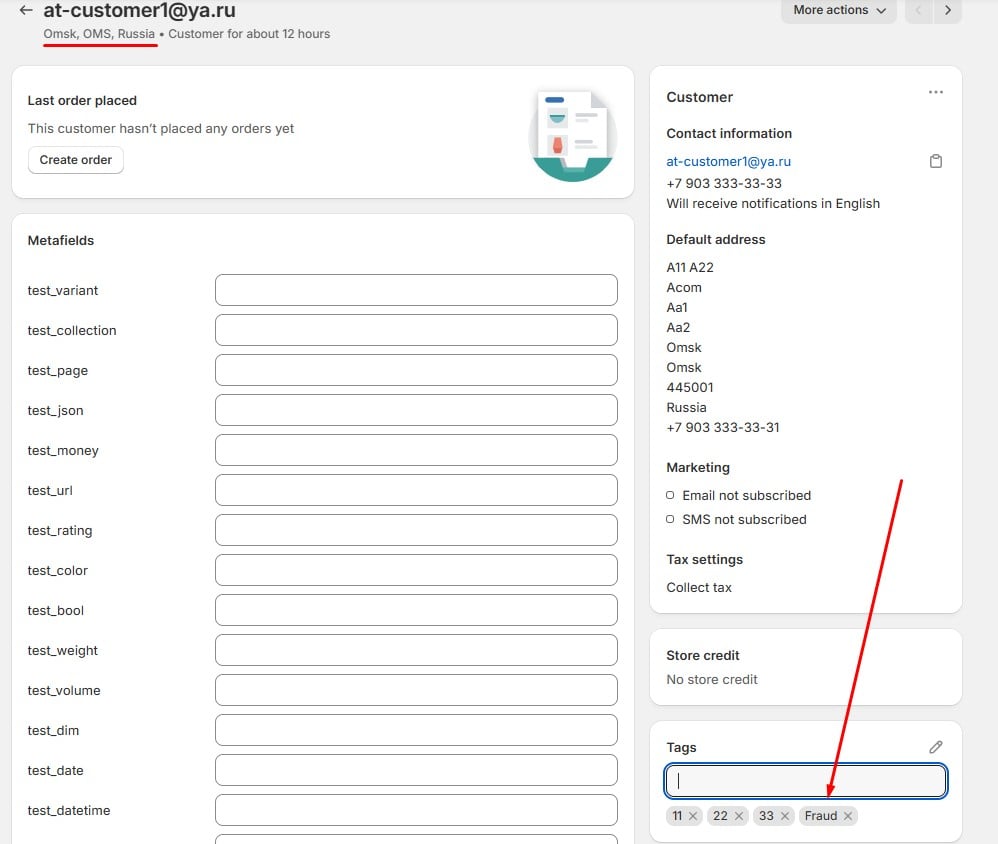
- Insert the above code into your theme’s Liquid template (e.g., in your theme.liquid file).
- When the tagged customer logs in, they will be automatically redirected to the specified URL (e.g., an error or warning page).
Limitations: This solution only works for logged-in users. If the customer logs out or uses another account, they can bypass the redirect. For more robust blocking, consider third-party fraud protection solutions that we explore below.
Top Apps to Block Customers on Shopify
If you’re looking for a more automated and effective way to block customers on Shopify, third-party apps are your best option. These tools help you prevent fraudulent orders, block specific customers based on rules you set, and even block access to your store from certain IP addresses or regions.
Here are 5 powerful Shopify apps designed to help you manage problematic customers and reduce risks.
1. Blocky: Fraud Filter Blocker
Rating: ⭐ 4.9 (466 reviews)
Pricing: Free plan available, with paid plans starting at $9.99/month
is a versatile app that allows you to block customers on Shopify based on various criteria such as IP address, email, and country. You can also set up rules to prevent high-risk orders and block disposable email addresses.
Key Features:
- Block customers by IP address, country, or email
- Prevent checkout for specific users
- Real-time monitoring and alerts for blocked attempts
2. Chargeflow Dispute Chargebacks
Rating: ⭐ 4.8 (263 reviews)
Pricing: Free to install (chargeback recovery fees apply)
is designed to help you prevent and fight chargebacks. While not a traditional blocking app, it protects your store by detecting risky transactions and automatically managing disputes on your behalf.
Key Features:
- Real-time chargeback prevention
- Automated chargeback dispute management
- Fraud detection and transaction monitoring
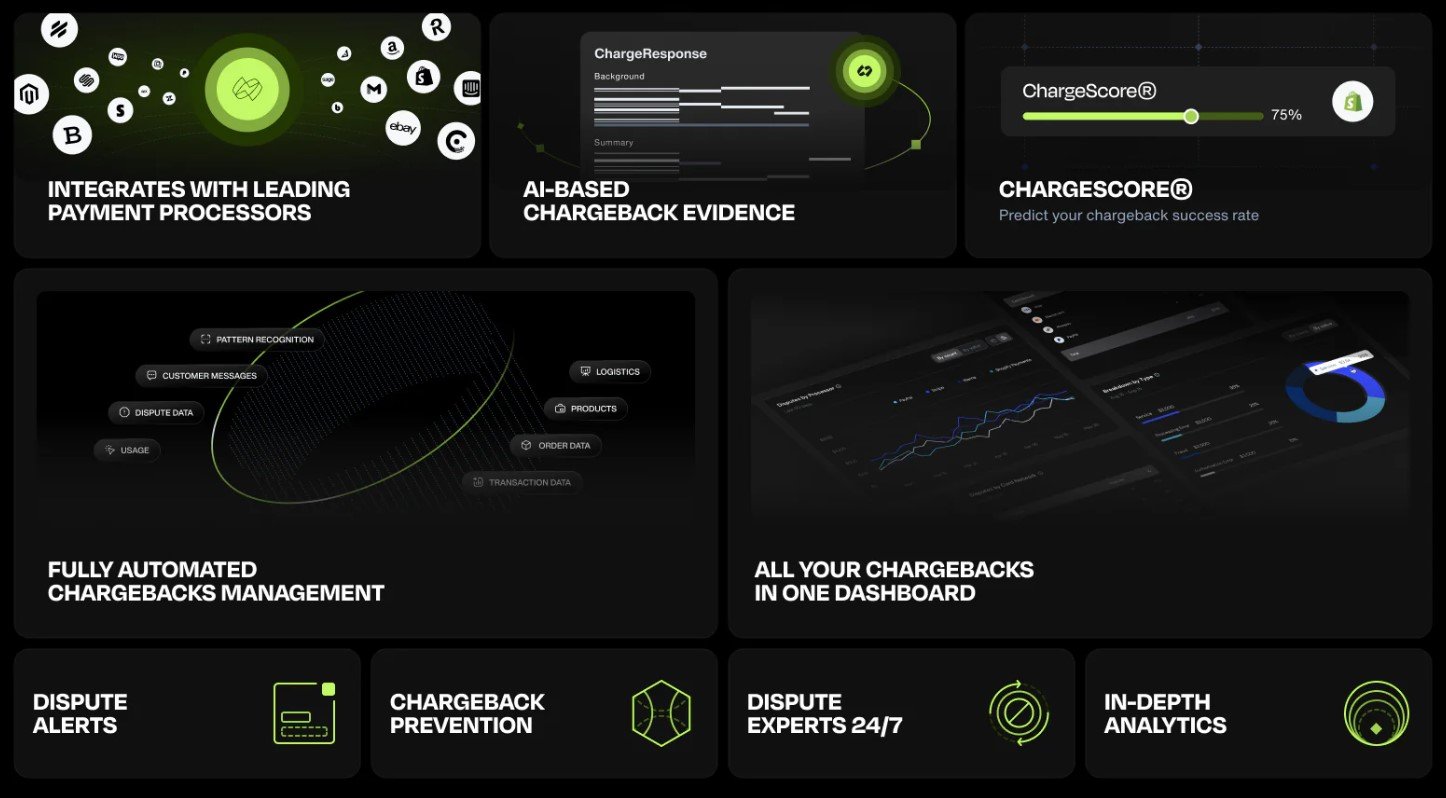
3. NoFraud Fraud Protection
Rating: ⭐ 4.5 (181 reviews)
Pricing: Free trial available; pricing based on transaction volume
is a comprehensive fraud prevention app that provides real-time transaction monitoring and automatic order blocking for high-risk customers. It’s a great choice for stores that experience frequent fraudulent activity and need to block customers on Shopify.
Key Features:
- Instant fraud detection and order blocking
- Chargeback protection and reimbursement
- Dashboard with detailed risk analysis
4. BM: Country Blocker & IP Blocker
Rating: ⭐ 5.0 (142 reviews)
Pricing: Free plan available, with paid plans starting at $4.99/month
lets you control access to your store by blocking specific countries or IP addresses. This app is particularly useful for reducing fraudulent traffic from high-risk regions or blocking specific customers on Shopify using their IP.
Key Features:
- Block access to your store by country or IP
- Customizable block message for visitors
- Real-time blocking and monitoring
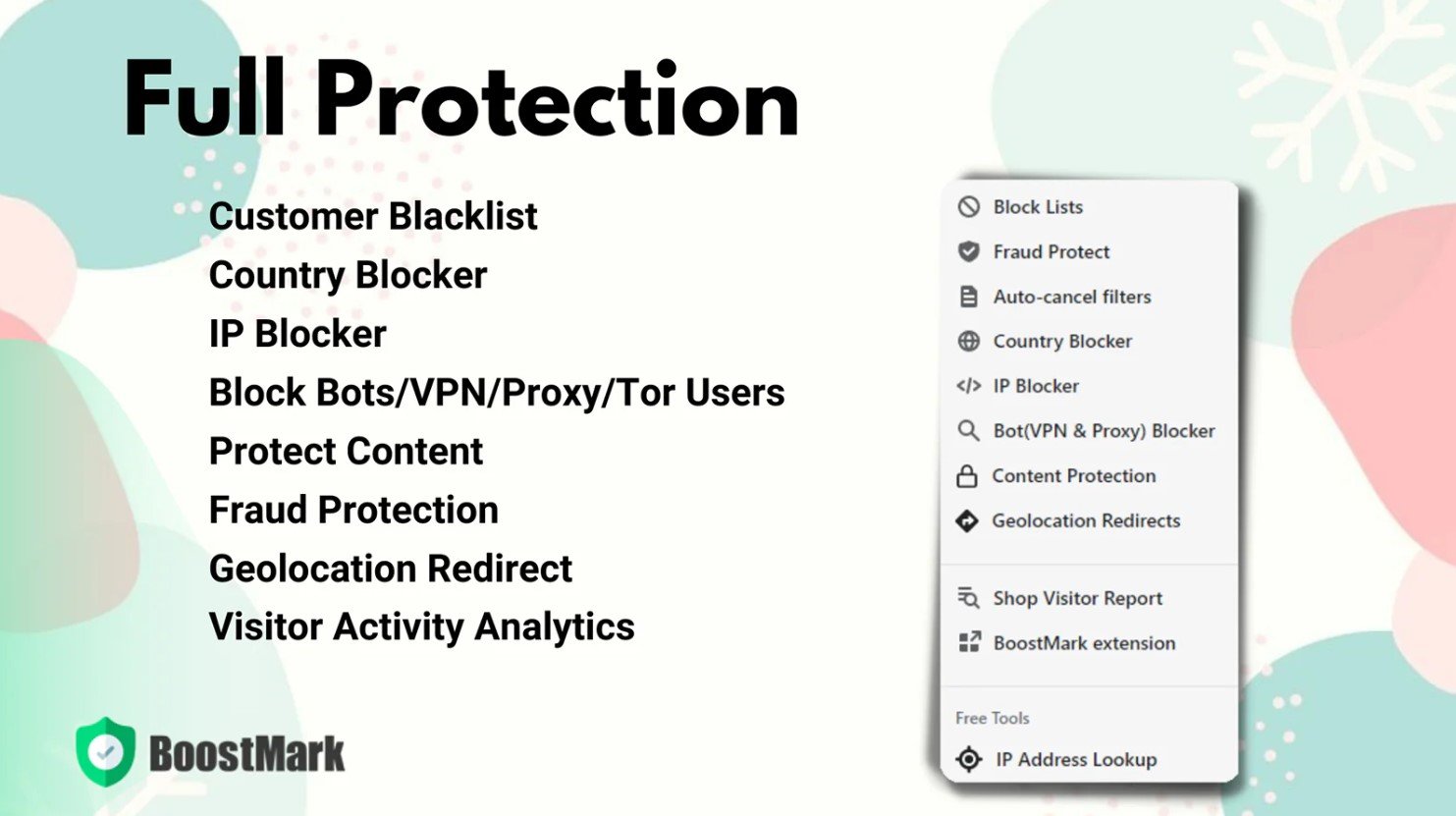
5. Blockify Fraud Filter
Rating: ⭐ 4.6 (143 reviews)
Pricing: Free plan available, with premium features starting at $14.99/month
offers advanced fraud filtering and customer blocking features. It allows you to block customers based on customizable rules such as high-risk email domains, flagged credit cards, and more.
Key Features:
- Custom fraud filters and automatic order blocking
- Block disposable email addresses
- Set custom rules for high-risk orders
- Automatically block VPN and TOR
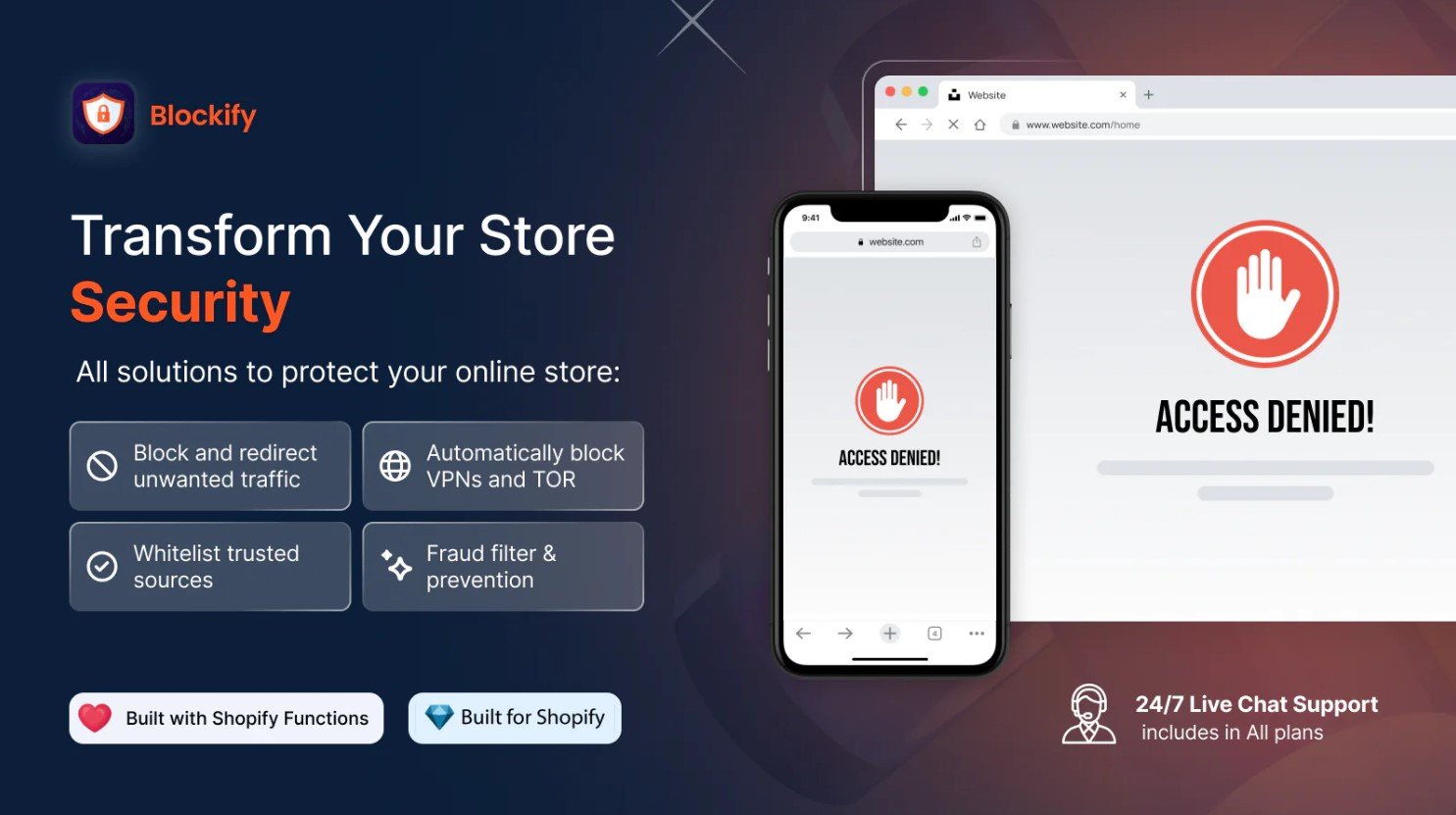
The right app for you depends on your specific needs. Blocky and BM: Country Blocker are ideal for blocking access, while NoFraud and Chargeflow focus on preventing fraudulent orders and chargebacks. Consider combining one of these apps with your existing Shopify fraud tools for maximum protection.
In the next section, we’ll discuss how to avoid false positives and accurately identify problem customers, ensuring you don’t block genuine buyers.
Avoiding False Positives: How to Identify Problem Customers Accurately
Blocking customers on Shopify can protect your business from fraud and abuse, but how can you ensure you’re not blocking genuine customers by mistake? False positives — when legitimate customers are mistakenly flagged as problematic — can damage your reputation, reduce sales, and lead to frustrated buyers. Let’s explore how to avoid these issues and accurately identify high-risk customers.
Use Shopify’s Fraud Analysis Tools
Shopify provides fraud analysis reports for orders processed through Shopify Payments. These reports highlight common red flags:
- Mismatched billing and shipping addresses
- High-risk IP addresses
- Multiple failed payment attempts
These indicators can help you quickly spot potentially fraudulent orders. However, fraud analysis is limited to Shopify Payments, so if you use other payment gateways, you’ll need to monitor orders manually or integrate third-party fraud protection apps.
Monitor Order Patterns and Customer Behavior
Instead of blocking every flagged order, look for patterns that indicate problematic customers:
- Frequent returns or chargebacks
- Orders placed at unusual times (e.g., during non-business hours)
- Large, high-value orders from new customers
Cross-referencing these behaviors can give you a clearer picture of whether a customer is genuinely risky or simply unusual.
Implement Manual Reviews for Flagged Orders
For orders flagged as medium or high risk, consider conducting a manual review before taking action. This approach allows you to check for specific details that automated systems might miss:
- Verify customer contact information.
- Compare past order history.
- Reach out to the customer directly for clarification.
Combining human judgment with automated fraud detection tools significantly reduces the chance of blocking legitimate customers.
Cross-Check Customer Data
Check for consistency in customer data, such as:
- Does the email address look legitimate, or is it autogenerated?
- Are the shipping and billing addresses from the same region?
- Does the IP address align with the customer’s location?
Cross-referencing these data points can help you differentiate between genuine and fraudulent customers.
While it’s essential to protect your store, being overly cautious can hurt your business. The key is to combine human oversight with smart automation. Focus on accuracy rather than speed, and always prioritize clear communication with customers if you suspect an issue.
Below, we dive into the legal considerations of blocking or deleting customer accounts on Shopify, ensuring you stay compliant with data protection laws.
Legal Considerations for Blocking Customers: Privacy and Compliance
Blocking or deleting customers on Shopify might seem like a simple way to protect your business, but it’s essential to stay compliant with data protection laws like the General Data Protection Regulation (GDPR) and the California Consumer Privacy Act (CCPA). Failing to adhere to these regulations can lead to serious legal consequences and damage your store’s reputation.
So, how can you safeguard your business while ensuring compliance with these laws? Let’s break it down.
Understanding Data Protection Laws
- GDPR (General Data Protection Regulation) — Applicable to businesses dealing with customers in the European Union, GDPR gives customers the right to access, modify, or request deletion of their personal data. If a customer asks for their data to be erased, you must comply within a reasonable timeframe.
- CCPA (California Consumer Privacy Act) — This law protects the personal data of California residents, giving them rights similar to GDPR, including access to their data and the ability to opt out of data sharing.
Blocking a customer doesn’t necessarily violate these regulations, but deleting or handling their personal data improperly might. Understanding the rules is crucial before taking action.
Document the Reasons for Blocking or Deleting Customers
For every customer you block or delete, it’s essential to maintain detailed records that explain your decision. This will help you:
- Ensure compliance with Shopify’s terms of service.
- Protect your business in case of disputes.
- Provide evidence if a customer challenges your actions.
What should you document?
- The customer’s behavior and specific incidents (e.g., fraudulent orders, abusive messages).
- Order history and Shopify’s fraud analysis results.
- Steps taken before blocking (e.g., warnings or manual reviews).
This documentation will also help your team maintain consistent policies when handling similar situations in the future.
Shopify’s Terms of Service and Blocking Practices
Shopify allows merchants to take necessary steps to protect their business, but any action taken — such as deleting customer accounts — must comply with Shopify’s Acceptable Use Policy and privacy regulations. Avoid discriminatory practices and ensure that every blocked customer is treated fairly and consistently.
Here are some best practices:
- Anonymize customer data if required by GDPR. This removes personally identifiable information while preserving order history for reporting.
- Communicate clearly with customers when disputes arise to avoid escalation.
Staying compliant doesn’t mean you can’t protect your business. The key is to find the right balance between privacy and security. Ensure your policies are aligned with applicable regulations, and always document your actions. With the right strategy, you can minimize risk while maintaining trust with your legitimate customers.
Next, we discuss the risks and consequences of not blocking problematic customers, and how failing to act could harm your business.
What Happens if You Don’t Block Problem Customers? Risks and Consequences
It may feel easier to ignore problematic customers, but failing to act can lead to serious consequences for your business. Fraudulent orders, repeated abuse, and chargebacks can cause financial damage, while the trust of your loyal customers may erode over time. Let’s explore what happens if you don’t take steps to block high-risk customers on Shopify and how it could affect your business.
1. Financial Losses from Fraud
Fraudulent transactions can quickly eat into your profits. High-risk orders, especially those involving stolen credit cards, result in chargebacks — leaving you to cover the cost of the order, lost merchandise, and additional fees. If you don’t block fraud-prone customers, you expose your business to ongoing financial losses.
2. Increased Chargeback Fees
Chargebacks aren’t just costly in terms of lost revenue; they also come with fees that can add up quickly. Excessive chargebacks can even lead to penalties from payment processors, higher transaction fees, or the suspension of your payment services.
3. Damage to Your Reputation
Your brand’s reputation is everything in e-commerce. Problematic customers who spread false claims, post fake reviews, or abuse customer service can harm your online image. A few bad experiences shared on social media or review sites can deter potential buyers from trusting your business.
4. Decreased Trust Among Legitimate Customers
If legitimate customers experience delays or disruptions due to fraudulent activity — such as out-of-stock items caused by fake orders — their trust in your store will erode. This could result in fewer repeat purchases and negative word-of-mouth.
5. Operational Disruptions
Problematic customers can create logistical chaos. For instance, multiple fake orders might overwhelm your system, slow down fulfillment, or lead to incorrect inventory levels. This disrupts your daily operations and affects overall efficiency.
Ignoring these risks can have a snowball effect. What starts as a single fraudulent order can escalate into ongoing losses, strained resources, and a tarnished brand reputation. But the good news? Proactive monitoring and customer blocking strategies can protect your store and create a better experience for your loyal customers.
Final Words: Balancing Protection and Customer Experience
Blocking problematic customers on Shopify is essential for protecting your business from fraud and ensuring a safe shopping environment. However, it’s equally important to maintain a balance between security and providing a seamless experience for genuine customers. A strong customer management strategy involves more than just blocking suspicious users — you need to be proactive in monitoring orders, identifying risky behavior, and combining automation with human oversight to make smarter decisions.
Using tools like Shopify’s built-in fraud analysis and third-party apps can significantly reduce risks, but it’s also crucial to stay compliant with regulations such as GDPR and CCPA when managing customer accounts. Documentation and transparency in your actions help protect your business and keep your policies consistent. Balancing protection with fairness not only minimizes financial losses but also reinforces trust with your loyal customers.
To take your customer management to the next level, consider using the Import & Export Tool for Shopify by Firebear. It allows you to prepare a full customer data backup before deleting an account, ensuring you have access to important information if needed. You can also import customer data at any time and automate customer data synchronization between Shopify and your CRM, saving you time and effort while keeping your data organized and secure. Contact us now to see how the Import & Export Tool can help you streamline your data management.
FAQ
Can I block customers from ordering on Shopify?
Shopify does not provide a built-in option to block customers from ordering. However, you can use third-party apps, fraud filters, or IP blockers to prevent unwanted customers from making purchases.
Does deleting a customer prevent them from coming back?
Deleting a customer removes their information from your Shopify admin but does not block them from creating a new account or placing future orders.
Is there a way to block Shopify customers by IP?
Yes, but not natively. You can use Shopify apps like Blocky: Fraud Filter Blocker or BM: Country Blocker & IP Blocker to block customers by IP address or location.
How do I stop fraudulent orders and chargebacks?
Use Shopify’s fraud detection tools and third-party apps like Chargeflow or NoFraud Fraud Protection to prevent chargebacks and fraudulent orders.
Can I label a customer as a fraud risk?
Yes, in Shopify, you can add a “Fraud” tag to a customer in the Customers section to help track high-risk buyers. However, this will not block them from ordering unless additional measures are taken.
How do I stop high-risk orders from being processed?
You can set up automation using Shopify Flow (on Shopify Plus) or use apps like Blockify to automatically cancel or flag high-risk orders.
Can I redirect blocked customers away from my store?
Yes, you can add Liquid code to your theme to redirect specific customers based on tags. For example, tagging a customer as “Fraud” can trigger an automatic redirection.
How do I prevent bots and spam accounts?
To stop bots and spam signups, enable Google reCAPTCHA in Shopify’s security settings or use an anti-fraud app like BoostMark Customer Blacklist.
How do I block customers from specific countries on Shopify?
Shopify does not have a built-in country blocker, but apps like BM: Country Blocker allow you to restrict access by country.
How can I permanently prevent a blocked customer from returning?
For persistent problematic customers, consider combining multiple methods: IP blocking, fraud detection apps, automated order cancellations, and manual reviews to prevent them from returning.









